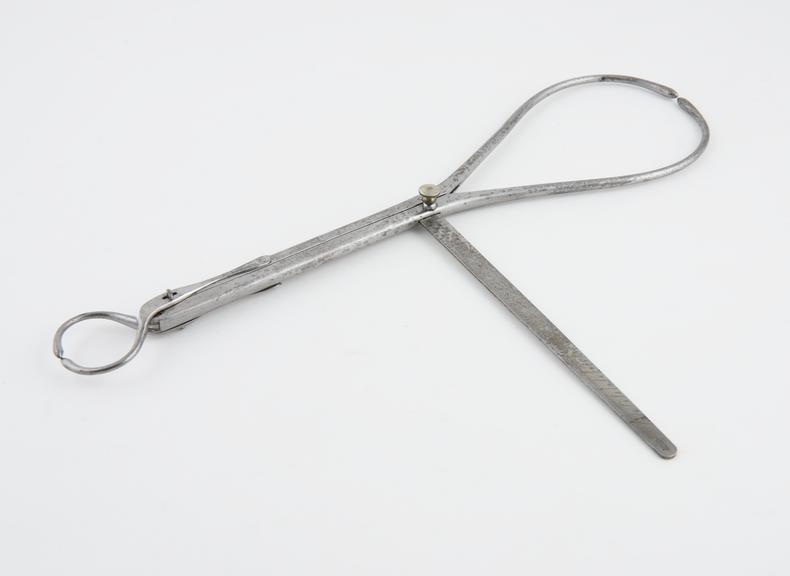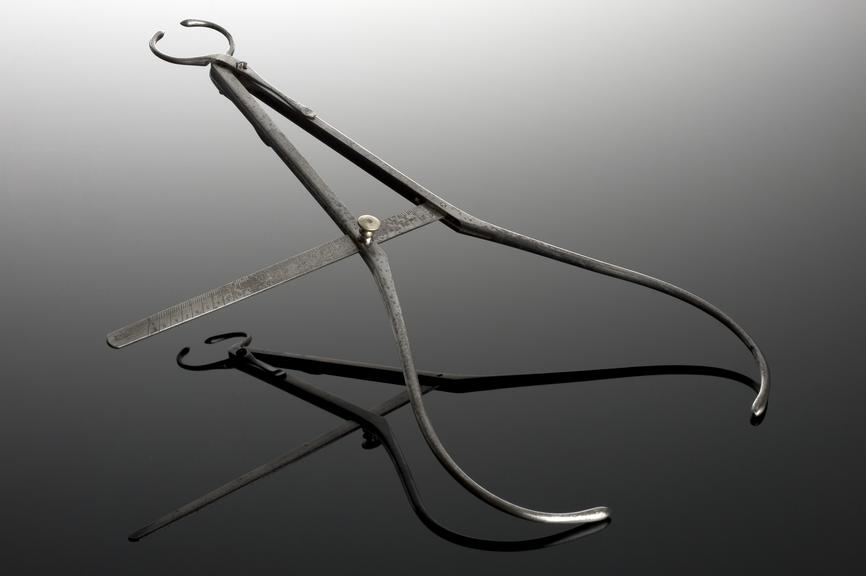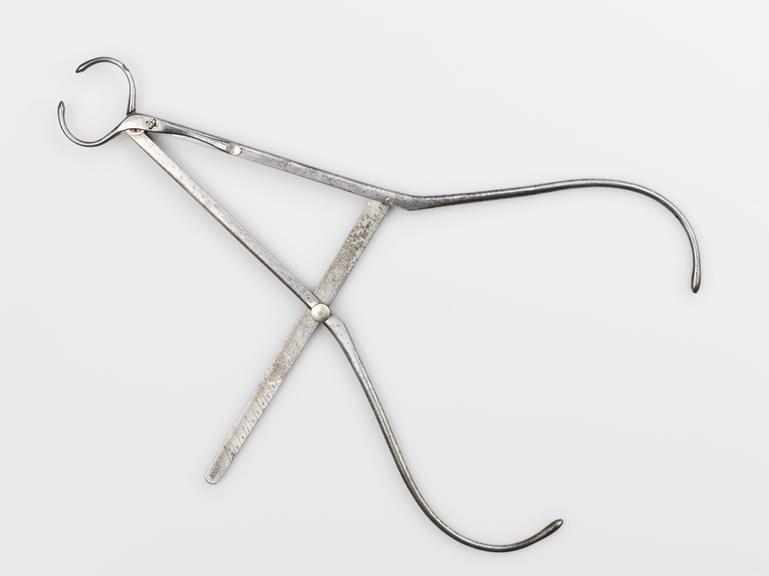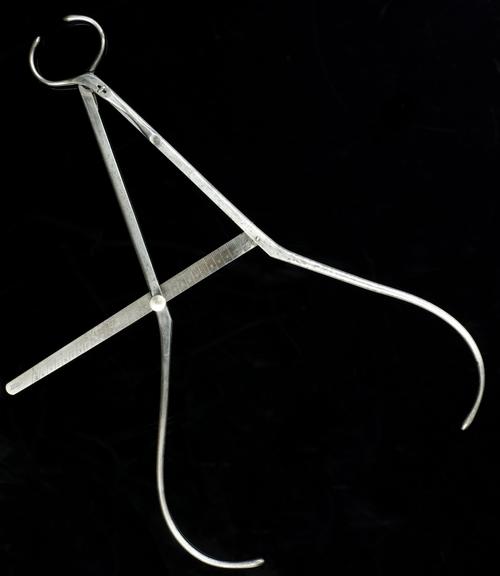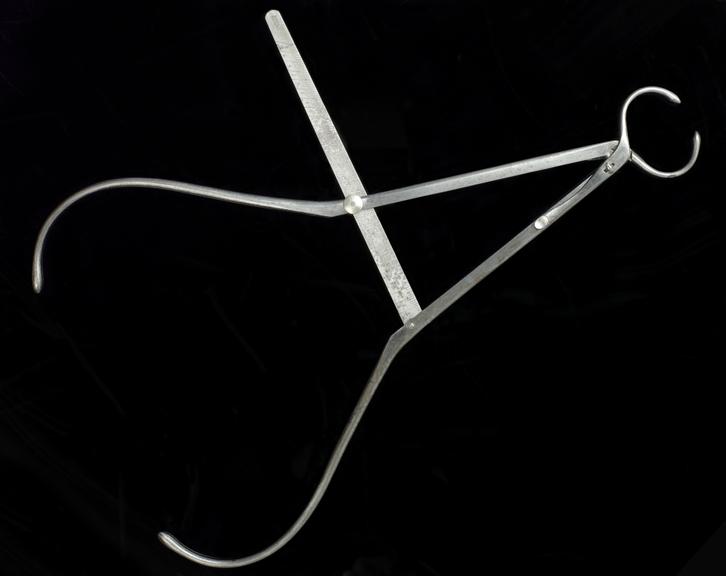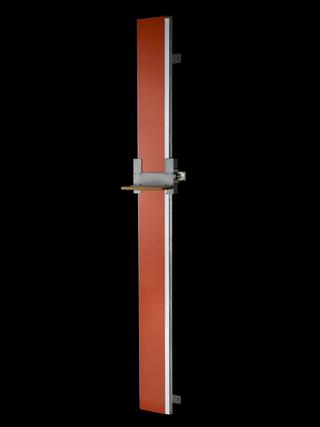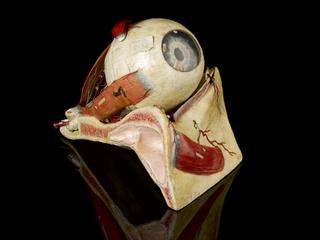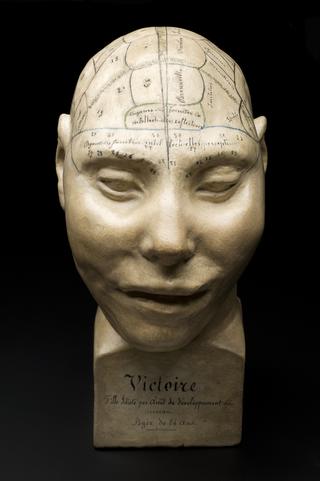Calliper for measuring the head in criminal identification system, Paris, France, 1867-1899
Known as a compass d’epaisseur, this calliper was used to measure the thickness of the neck. Held horizontally, the two branches were applied to the neck and the measurement in millimetres read from the scale. Neck thickness was just one measurement taken of the human body by anthropologists in the 1800s, who attempted to classify humans into different types and races.
Devised by Paul Broca (1824-80), a French surgeon and anthropologist, the calliper was made by Mathieu, a French surgical instrument maker.














